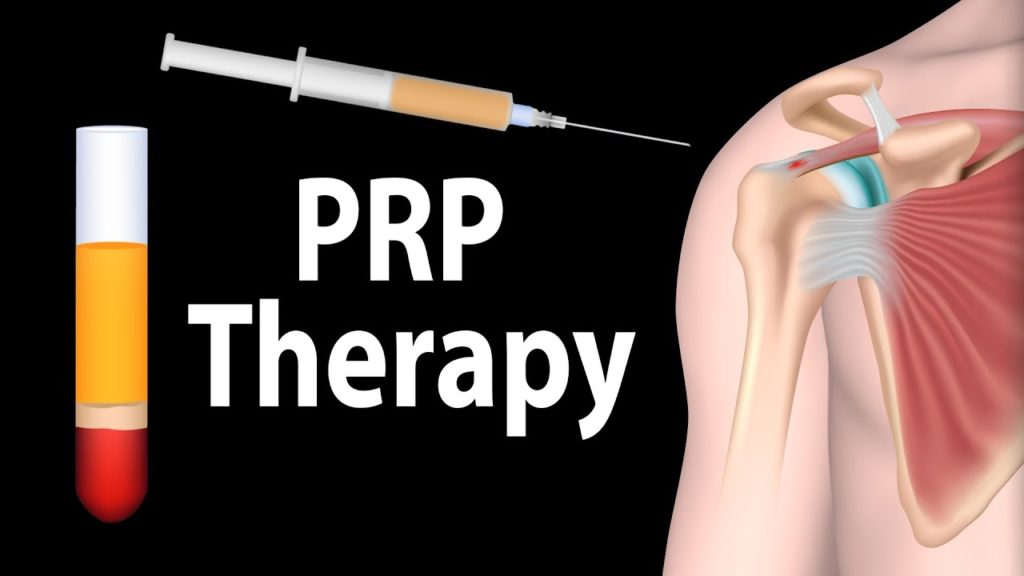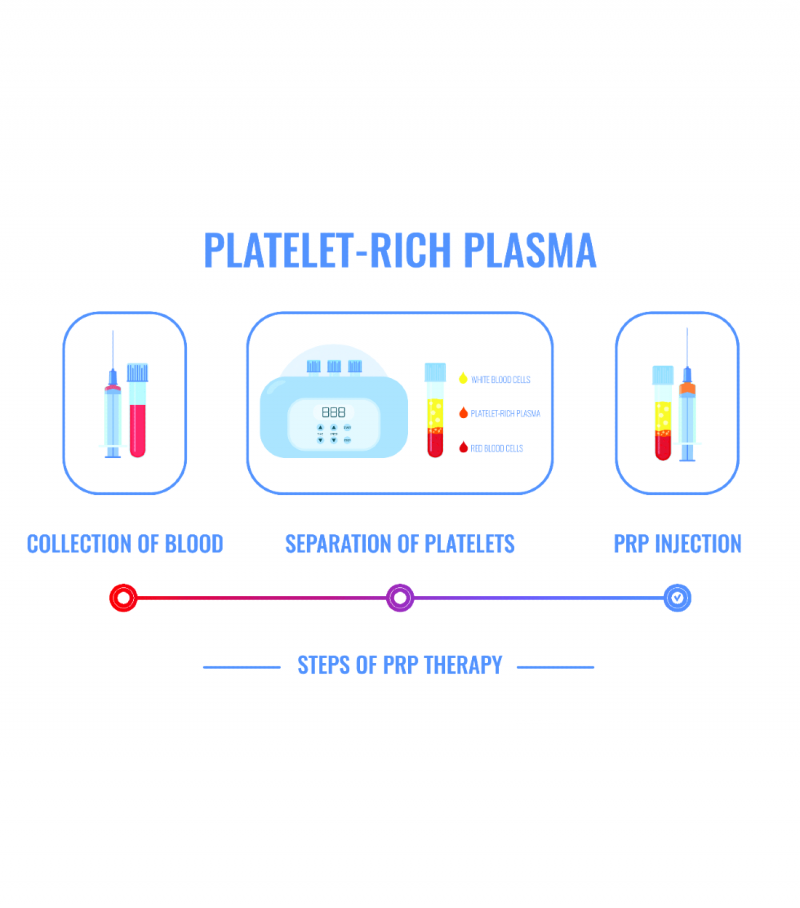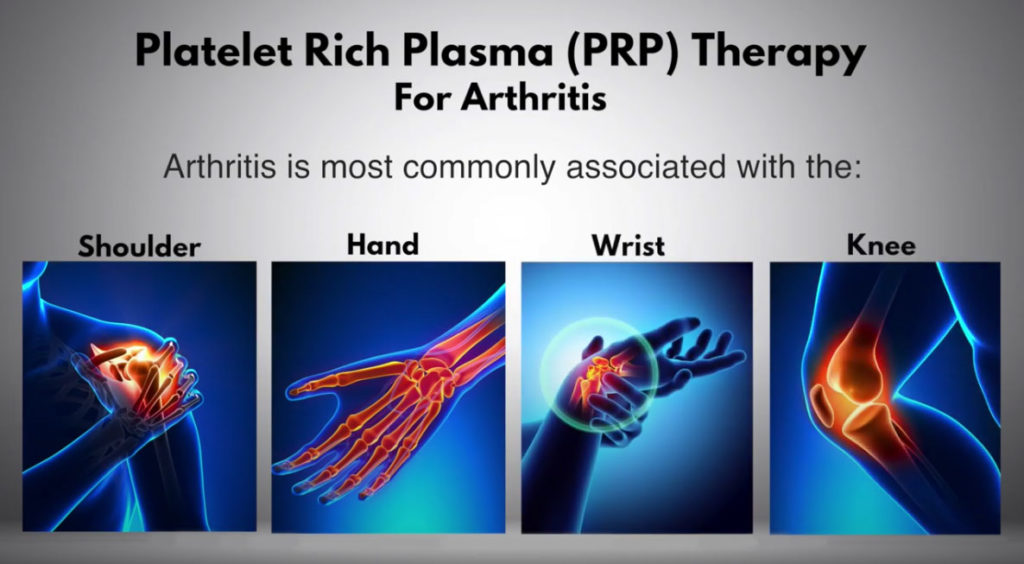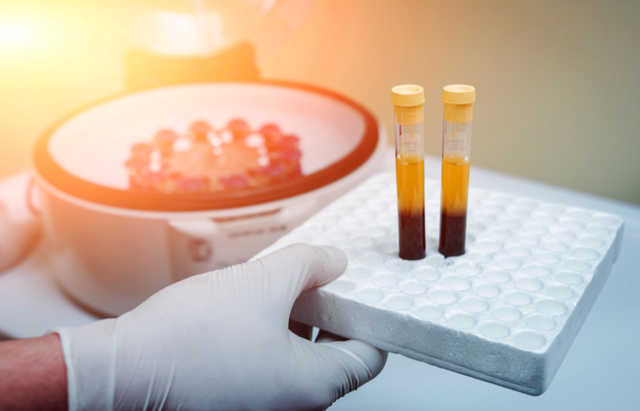PRP (Platelet Rich Plasma) Therapy
PRP, platelet rich plasma, is one of the cutting-edge treatments available at Active Integrated Medical Center to repair damaged soft tissues (such as tendons, ligaments, muscles) and joints.
What is PRP and how does it work?
PRP, as the name implies, is a liquid component of the blood named plasma that contains blood cells called platelets at a much higher concentration than the usual human plasma. It is derived from the patient’s own blood and re-injected into the damaged or diseased tissue to stimulate its repair. While platelets play a vital role in stopping bleeding by forming a blood clot, they are also a reservoir of proteins called growth factors that kick-start the growth of new, healthy cells and promote the natural healing process.


How is PRP therapy done?
Just like with a routine blood test, a small amount of blood is drawn from the vein in your arm. After separating concentrated platelets from the blood in a spinning machine and discarding other blood cells, the platelet-rich plasma is collected. This is then injected back into the injured tendon, ligament, muscle, or joint that is not healing at a normal pace. Your doctor may use ultrasound guidance to pinpoint the site of injury and direct the needle to the exact site.
What does Platelet-Rich Plasma Therapy Do?
- Inhibit inflammation and slow down the progression of osteoarthritis
- Stimulate the formation of new cartilage
- Increase the production of natural lubricating fluid in the joint, thereby easing painful joint friction
- Contain proteins that alter a patient’s pain receptors and reduce pain sensation

What is the outcome of PRP?
The outcome of PRP is reduced inflammation and pain, and thus accelerated healing and recovery of the affected tissues. Pro athletes from all kinds of sports are also reaping PRP’s benefits in the form of improved recovery.
When treating osteoarthritis with platelet-rich plasma, a provider injects PRP directly into the affected joint.
The goal is to:
- Reduce pain
- Improve joint function
- Possibly slow, halt, or even repair damage to cartilage

What injuries/orthopedic disorders benefit from PRP?
Given PRP’ fast healing potential it can be used to help the following injuries and conditions:
- Rotator cuff tears at the shoulder joint
- Hamstring or quad strain
- Patellar tendon injuries
- Elbow pain from lateral or medial epicondylitis
- Age-related inflammation and degeneration of the joints
- Neuropathy
Platelet Rich Plasma to help patients with Neuropathy
Platelet-rich plasma contains a component that enhances and promotes nerve regeneration. PRP can decrease some of the symptoms associated with neuropathy, including pain, discomfort, tingling sensation, numbness, and loss of function. The most common area of discomfort when the body is affected by neuropathy is the hands and feet. When platelet-rich plasma is injected directly into the site of pain, it will distribute the needed growth factors to help eliminate and protect against the symptoms of neuropathy.

Benefits of PRP Treatment for Neuropathy
- Help to regenerate damaged nerve tissues
- Reduce Pain
- Includes growth factors and cytokines
- Fights and protects against injury or infections
- Provides rejuvenation to the skin by stimulating collagen
- All-natural and non-invasive
If you or a loved one are looking for more information on how PRP treatments can be used to treat orthopedic conditions or neuropathy call Active Integrated Medical Center to schedule a Free Neuropathy/Joint Pain Relief Consultation (610)518-3370
